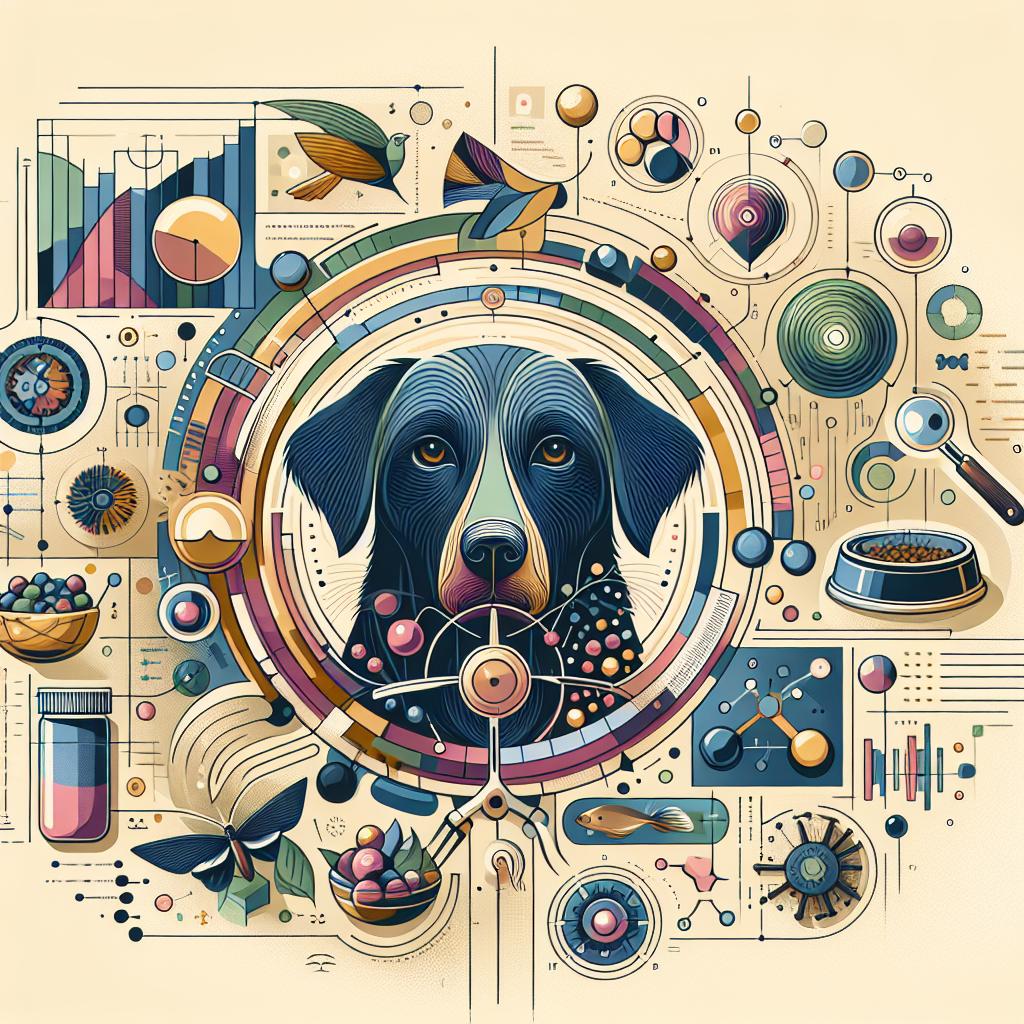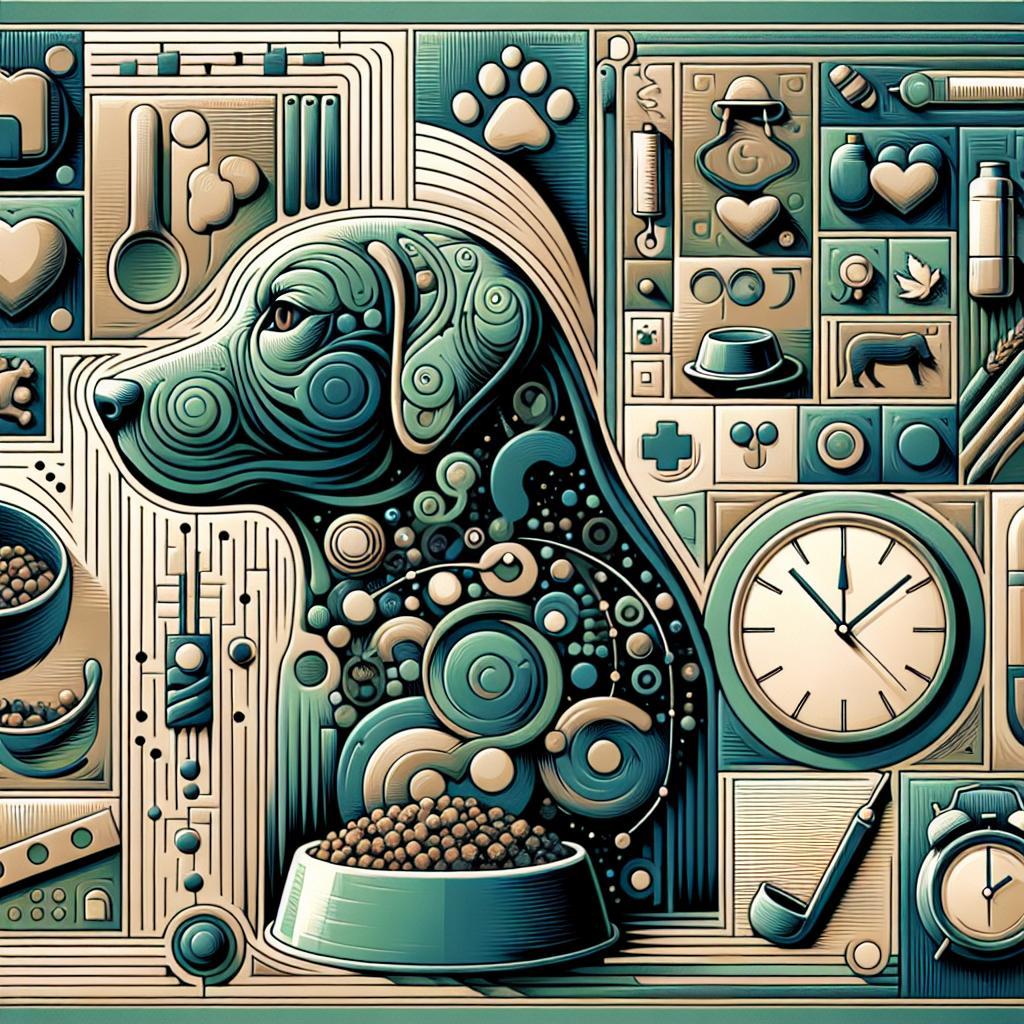In the rhythmic dance of daily life, our canine companions often rely on us to keep their routines in tune. Just like a well-orchestrated symphony, every note plays a vital role in ensuring harmony and balance. One of the most essential aspects of dog care is establishing a regular feeding schedule. Beyond simply filling a bowl with kibble, this practice shapes a dog’s overall well-being, influencing everything from digestive health to behavioral patterns. In this article, we will explore the myriad benefits of setting scheduled meal times for our furry friends and how these routines can lead to healthier, happier lives for both dogs and their owners. Join us as we delve into the vital interplay between feeding habits and dog health, illuminating the path to optimal care through the rhythm of regularity.
Benefits of Consistent Feeding Times for Optimal Health
Establishing a regular feeding schedule can significantly enhance your dog’s overall health and well-being. By feeding your furry friend at the same times each day, you create a sense of stability and predictability, which is crucial for their emotional and psychological balance. This routine helps regulate their digestive system, leading to improved absorption of nutrients. Furthermore, consistent feeding can aid in weight management, as it reduces the likelihood of overindulgence and snacking between meals. The stability offered by scheduled mealtimes ensures that your pet receives the proper nutrition they need, at the right intervals, for a balanced energy output throughout the day.
Another key advantage is that regular feeding times can facilitate a better understanding of your dog’s hunger cues and eating habits. Through careful observation of their feeding behavior, you can more easily identify any changes that may indicate health issues. This awareness allows for prompt veterinary intervention if necessary. Here are some additional benefits of adhering to consistent feeding times:
- Enhanced training opportunities: Routine feeding times work in your favor when training, as it creates a structure that can be used for behavior reinforcing.
- Reduced anxiety: Dogs thrive on routine, which can decrease their stress levels and promote a more relaxed demeanor.
- Bonding time: Regular mealtimes provide an opportunity for you and your dog to connect, enhancing your overall relationship.

Understanding Nutritional Needs and Portion Control
Understanding your dog’s nutritional needs is essential to keeping them healthy and happy. Each dog has different requirements depending on various factors such as age, breed, weight, and activity level. A balanced diet should comprise the right mix of proteins, carbohydrates, fats, vitamins, and minerals. For instance, active breeds may require more protein to support muscle repair and energy levels, while older dogs may need fewer calories to prevent weight gain. Make sure to select high-quality dog food that meets the guidelines set by the Association of American Feed Control Officials (AAFCO).
Portion control plays a significant role in a dog’s health and helps regulate their weight. Using a consistent feeding routine aids in preventing obesity and can also reduce the risk of digestive issues. Here are some tips to manage portion sizes effectively:
- Measure the food according to the package recommendations.
- Adjust portions based on your dog’s activity level and weight goals.
- Monitor treats, as they can contribute significantly to daily calorie intake.
| Dog Size | Daily Food Intake (cups) |
|---|---|
| Small (under 20 lbs) | 1/2 – 1 |
| Medium (20 – 50 lbs) | 1 – 2 |
| Large (50 - 100 lbs) | 2 – 4 |

Creating a Tailored Feeding Schedule for Your Dog
Establishing a personalized feeding schedule for your dog is vital to ensure their long-term health and happiness. Dogs thrive on routine, and a consistent mealtime can help regulate their digestion, energy levels, and overall well-being. It’s important to consider your dog’s age, breed, size, and activity level when crafting a schedule. For instance, puppies require more frequent feedings than adult dogs, while larger breeds may benefit from fewer, larger meals. By taking these factors into account, you can tailor a feeding routine that suits your furry friend’s unique needs.
To create an ideal feeding plan, start by identifying the appropriate amount of food your dog should receive daily. You can then divide this amount into specific meal times. Here’s a simple breakdown to guide you:
| Dog Age | Feeding Frequency |
|---|---|
| Puppy (8-12 weeks) | 4 times/day |
| Puppy (3-6 months) | 3 times/day |
| Adult Dog (6 months+) | 2 times/day |
In addition to frequency, consider creating a dedicated feeding area that is quiet and free from distractions. This can help your dog focus on their meal and enjoy the feeding experience. Regular feeding times can also reinforce good behavior and reduce the likelihood of begging or food-related anxiety. By crafting a structured approach to feeding, you set the foundation for a healthy and balanced life for your beloved companion.

Signs Your Dog May Need Dietary Adjustments
Observing your dog’s behavior and health can provide crucial insights into whether their diet needs to be adjusted. Some key signs that your furry friend may require a dietary change include:
- Weight Fluctuations: Sudden weight gain or loss could indicate that their food is either too high in calories or lacking essential nutrients.
- Changes in Energy Levels: If your dog seems lethargic or excessively hyper, their current diet might not be providing the right balance of nutrients.
- Digestive Issues: Vomiting, diarrhea, or changes in stool consistency are strong indicators that a dietary reconsideration is needed.
- Skin and Coat Problems: Dull fur or the emergence of skin irritations could signal deficiencies in essential fatty acids.
Additionally, behavioral changes can also hint at dietary needs. For instance, increased irritability or food obsession might suggest that your dog is not satisfied or well-fed with their current meals. Monitoring these symptoms can lead to a healthier and happier companion. To assist in determining the best dietary adjustments, keeping a food diary can be beneficial. Consider the following table to guide your dietary evaluation:
| Symptom | Possible Dietary Adjustment |
|---|---|
| Weight Gain | Switch to lower-calorie food |
| Weight Loss | Increase calorie intake or high-quality protein |
| Lethargy | Incorporate high-energy foods or supplements |
| Skin Irritations | Add omega-3 fatty acid sources to diet |
Q&A
Q&A: The Importance of Regular Feeding Schedules for Dogs
Q: Why is establishing a regular feeding schedule important for dogs?
A: A consistent feeding schedule helps regulate your dog’s digestion and metabolism, promoting better overall health. It also creates a routine that dogs thrive on, making them feel secure and reducing anxiety.
Q: How does a regular feeding schedule affect a dog’s behavior?
A: Dogs are creatures of habit. Regular feeding times can lead to more predictable behaviors, reducing begging or scavenging. When they know when to expect their meals, they are less likely to be anxious or exhibit food-related aggression.
Q: Can regular feeding schedules help with weight management?
A: Absolutely. By feeding at the same times each day and measuring portions, you can help prevent overeating or grazing throughout the day. This contributes to maintaining a healthy weight, which is crucial for your dog’s long-term health.
Q: What are the potential downsides of irregular feeding schedules?
A: Irregular feeding can lead to digestive upset, such as nausea or diarrhea. Moreover, it may create unpredictable bathroom habits, making it harder for both you and your dog to establish a healthy routine.
Q: How often should I feed my dog?
A: The ideal feeding frequency varies with age and size. Puppies typically require three to four meals a day, while adult dogs generally do well with two meals. Always consider your dog’s specific nutritional needs and activity level.
Q: Should I adjust feeding times based on my dog’s activity level?
A: While it’s essential to tailor portion sizes and feeding times to match your dog’s activity level, sticking to a consistent schedule is crucial. You can adjust the type of food or amount, but maintaining regular meal times helps keep their internal clocks steady.
Q: What if my dog doesn’t seem to want to eat during scheduled times?
A: If your dog consistently refuses food at the scheduled times, it may be worth evaluating the food quality, the meal environment, or even consulting a veterinarian. Taste preferences, health issues, or even anxiety can impact their eagerness to eat.
Q: How can I train my dog to stick to a feeding schedule?
A: Start by offering meals at the same times each day without leaving food out for grazing. Incorporate training by rewarding them for calm behavior during mealtime, and establish a calm ritual leading up to feeding to create positive associations.
Q: Is it essential to adjust the feeding schedule as my dog ages?
A: Yes, as dogs age, their nutritional needs and activity levels often change. Senior dogs may benefit from more frequent, smaller meals to aid digestion. It’s essential to consult with your vet about any necessary dietary adjustments based on your dog’s age and health.
Q: Can feeding schedules contribute to bonding between dog and owner?
A: Absolutely! Routine feeding times can serve as an opportunity for bonding. Sitting together for meal times—where you interact, prepare, and serve—is an excellent way to foster trust and companionship between you and your furry friend.
Feel free to explore the balance and harmony a regular feeding schedule can bring to your dog’s life—and yours!
Key Takeaways
establishing a regular feeding schedule for your dog is not just a matter of convenience; it plays a pivotal role in their overall health and well-being. By creating consistency in their meal times, you not only help maintain a healthy weight but also contribute to better digestion, improved behavior, and a stronger bond between you and your furry friend. As you embark on this journey towards a more structured feeding routine, remember that every dog is unique, and it’s important to tailor their diet to meet their individual needs. Consistency, patience, and a little bit of creativity can go a long way in enhancing your dog’s quality of life. So, grab that bowl, set the clock, and watch your canine companion thrive in the comfort of a regular feeding schedule. After all, a well-fed dog is a happy dog!

